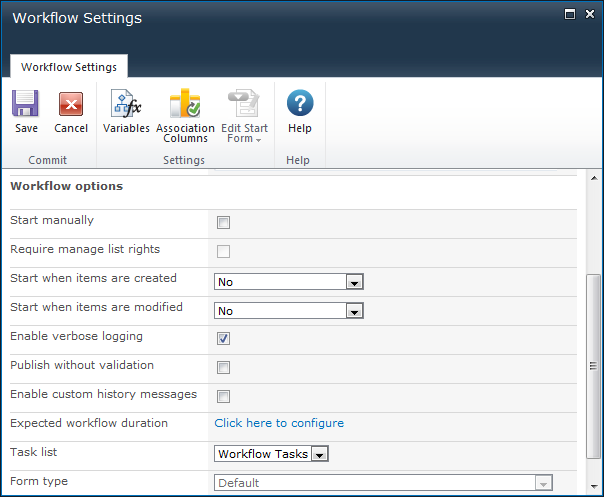








|
 |

|
 |

|
 |

|

|
Verbose logging adds increased context data when viewing the history of a workflow instance. The value of all workflow variables and item properties are stored before and after each workflow action, along with additional diagnostics information such as the process the workflow was running in and the server which was executing the workflow.
Verbose logging must first be enabled in the farm before it can be enabled in a workflow.
To enable verbose logging:
Note: A workflow with verbose logging enabled will add more data to the workflow database than one without, therefore there is an automatic purge process to remove verbose information after a number of days.

Global settings are cached and refreshed automatically every 15 minutes. For changes to take affect immediately, perform an IISRESET and restart the Windows SharePoint Services timer service.
Once verbose logging is enabled on the web farm, it can be enabled on a workflow.
To enable verbose logging for a workflow:

Verbose information is available from the Viewing workflow status of a workflow. If the instance is run with verbose logging enabled, and the verbose data has not yet been cleared, a message in the workflow information panel will state that verbose logging information is available. If verbose data is available, each workflow action can be clicked on to bring up the verbose information panel. The panel shows each data item available to the workflow, with the values before and after the action executed. If any value changed, it will be highlighted.
There are options to export the verbose information for a particular action or the entire verbose log to an xml file.
Verbose logging adds a significant amount of data to the Nintex Workflow database. The data is not intended to be kept for a long time. The verbose logging feature is intended as an assistant for workflow development and testing, and is not intended to be left on in production.